Shanghai Expo 2010 pavilions
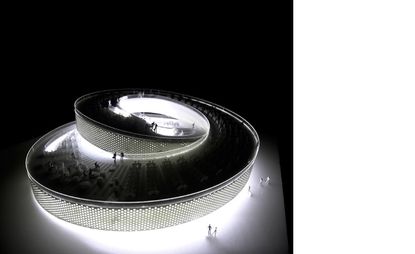
The Danish Pavilion: 'Wellfairytale' by Big architects
The Danish have decided to move their Little Mermaid statue, along with a supertanker full of water from the harbour, to Shanghai. 'It is more efficient to move the Little Mermaid to China than to move 1.3b Chinese to Copenhagen,' remarked BIG architects and the 2+1 Ideas Agency. The statue will sit at the base of a swirling velodrome, where 1,500 Danish bicycles will carry visitors through the exhibits. Meanwhile, Chinese artist Ai Weiwei will design a temporary sculpture to fill the space left by the mermaid.
For this year's Shanghai Expo, countries around the globe have been locked in battle to produce the most show-stopping pavilion and secure the attention of all-important Chinese businesses.
In our May issue (W*134), we showed Thomas Heatherwick's playful and subversive design for brand Britain, dubbed 'The Hairy Cube', and discovered the architect's thinking behind its conception. But now it's time to give other nations a chance. Here, we show some of the most arresting pavilions for the forthcoming Expo, whose theme this year is: 'Better City, Better Life.
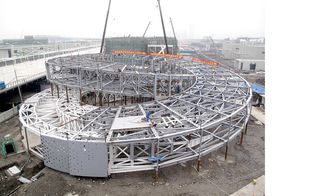
The Danish Pavilion: ’Wellfairytale’ by Big Architects
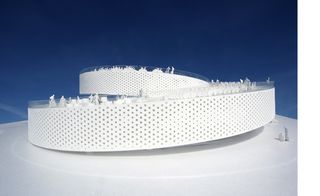

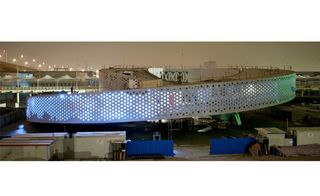
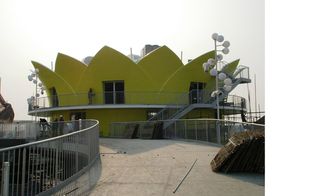
The Dutch Pavilion: 'Happy Street’ by John Kormeling
'I love the fact that one country has turned their Expo site into a fairground,' said one rival Expo pavilion director about the Dutch effort. The upbeat pavilion is a Dutch street that has been looped into a figure of eight (a lucky number in China) and raised into the sky. Each of the 26 houses along the curving street is dedicated to a different topic, from energy conservation to the way the Dutch have mastered the use of space. At the end of the loop sits a giant yellow tulip-shaped crown, which, fittingly, is the VIP room.
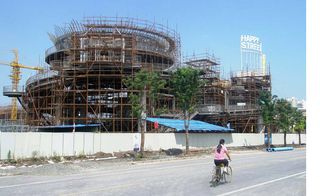

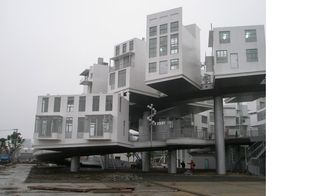
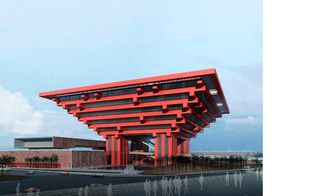
The Chinese Pavilion: 'Oriental Crown' by He Jingtang
The Chinese pavilion is the biggest, tallest and most expensive building on the Expo site. Built from interlaced red beams locked together with traditional Chinese dougong brackets, the inverted ziggurat is visible from miles around. But then, having spent almost £40bn on the Expo (roughly twice the budget of the Beijing Olympics), the Chinese were determined to make an impressive pavilion. Visitors will get a 40-minute tour that will include a trip in a cable car. A vision of China's future low-carbon cities is also promised.
Wallpaper* Newsletter
Receive our daily digest of inspiration, escapism and design stories from around the world direct to your inbox
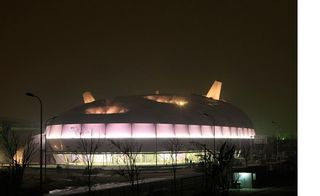
The Japanese Pavilion: 'Purple Silkworm' by Yutaka Hikosaka
Also known as Purple Silkworm Island, this is the biggest and most expensive pavilion that Japan has built for a World Expo. The cocoon-shaped pavilion is made from the world's first 'pillow membrane', built from amorphous solar cells. Collected rainwater will be sprayed over the membrane to keep it cool as it powers the displays. Once inside, visitors can tread on electricity-generating floorboards, test-drive Toyota's one-person transport pod, and listen to violin-playing robots. Canon is also set to unveil its new 3D camera.

The Macau Pavilion: 'Rabbit Lantern' by Carlos Marreiros
No, it's not a bunny girl from one of Macau's swankiest casinos, but a giant silver rabbit lantern, the kind Macau-born architect Carlos Marreiros remembers playing with as a child. The mega-structure is a glass case lit by colour-shifting LED lights powered by solar panels, while its head and tail are detachable balloons. Marreiros says it can be recycled when its six months are up. The 19.99m-tall rabbit marks the year (1999) when the former Portuguese colony was handed back to China. Visitors will find it sitting just a bunny hop away from the Chinese pavilion.
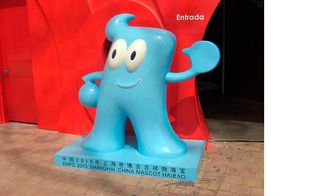
The Mascot: 'Haibao' by Wu Yongjian
You can barely walk a block in Shanghai without coming across the smiley, quiff-haired blue Expo mascot, Haibao. He pops up in topiary form, in wicker, in plastic and on dominos. His creator, Wu Yongjian, spent over a month working on the waving mascot, which was picked from almost 27,000 entries. 'Haibao is inspired by Chinese calligraphy and represents the cultural uniqueness of Shanghai,' says Wu. The mascot, which looks like the Chinese character for 'people', has already learned to talk with a clipped British accent for the Expo's website.
Ellie Stathaki is the Architecture & Environment Director at Wallpaper*. She trained as an architect at the Aristotle University of Thessaloniki in Greece and studied architectural history at the Bartlett in London. Now an established journalist, she has been a member of the Wallpaper* team since 2006, visiting buildings across the globe and interviewing leading architects such as Tadao Ando and Rem Koolhaas. Ellie has also taken part in judging panels, moderated events, curated shows and contributed in books, such as The Contemporary House (Thames & Hudson, 2018), Glenn Sestig Architecture Diary (2020) and House London (2022).
-
 Enjoy ocean and jungle bliss at Bespoke Tulum’s residences in Mexico
Enjoy ocean and jungle bliss at Bespoke Tulum’s residences in MexicoBespoke Tulum is an exclusive hospitality complex designed by Muro Rojo Arquitectura on Mexico’s Caribbean coastline
By Sofia de la Cruz Published
-
 In Van Cleef & Arpels’ high jewellery, the archival meets the au courant
In Van Cleef & Arpels’ high jewellery, the archival meets the au courantVan Cleef & Arpels pays tribute to its rich heritage with a captivating high jewellery collection
By Hannah Silver Published
-
 New Nothing Ear and Ear (a) earbuds: audio innovation with a retro nod
New Nothing Ear and Ear (a) earbuds: audio innovation with a retro nodNothing’s new Ear and Ear (a) earbuds, drawing inspiration from vintage portable hi-fi and packed with updates, help the company maintain its status as an audio innovator
By Jonathan Bell Published